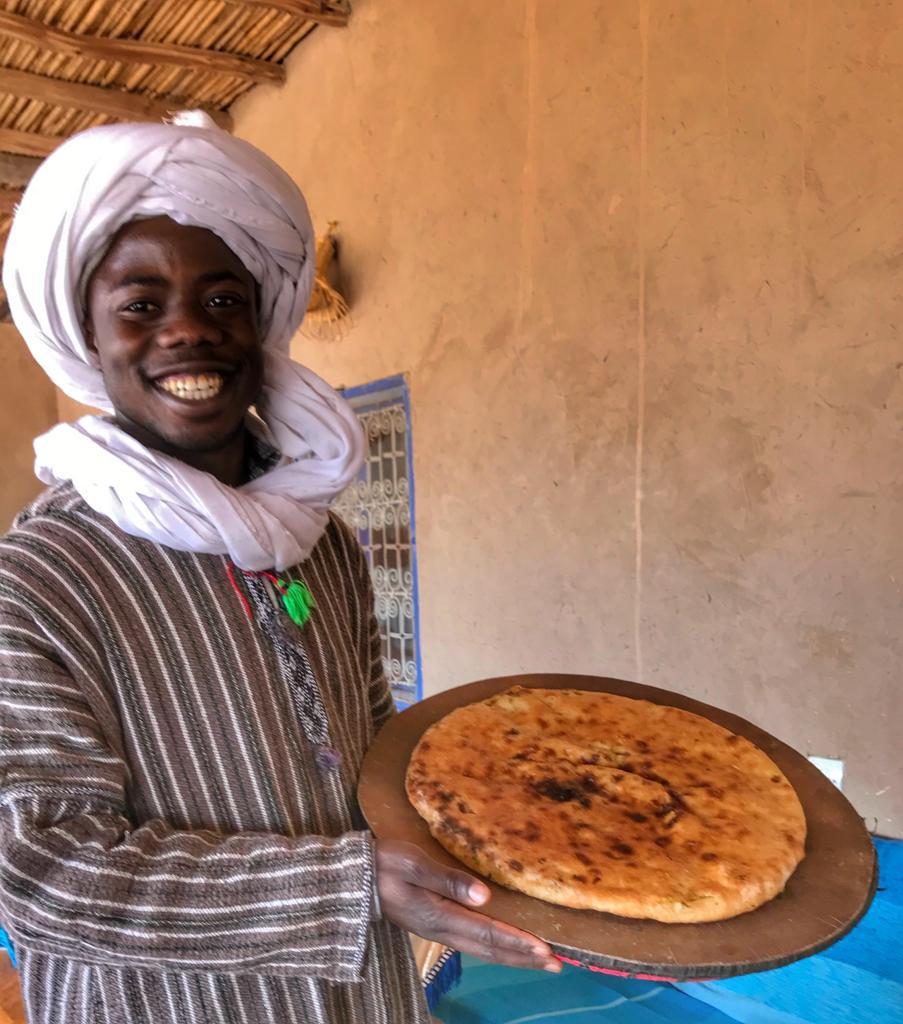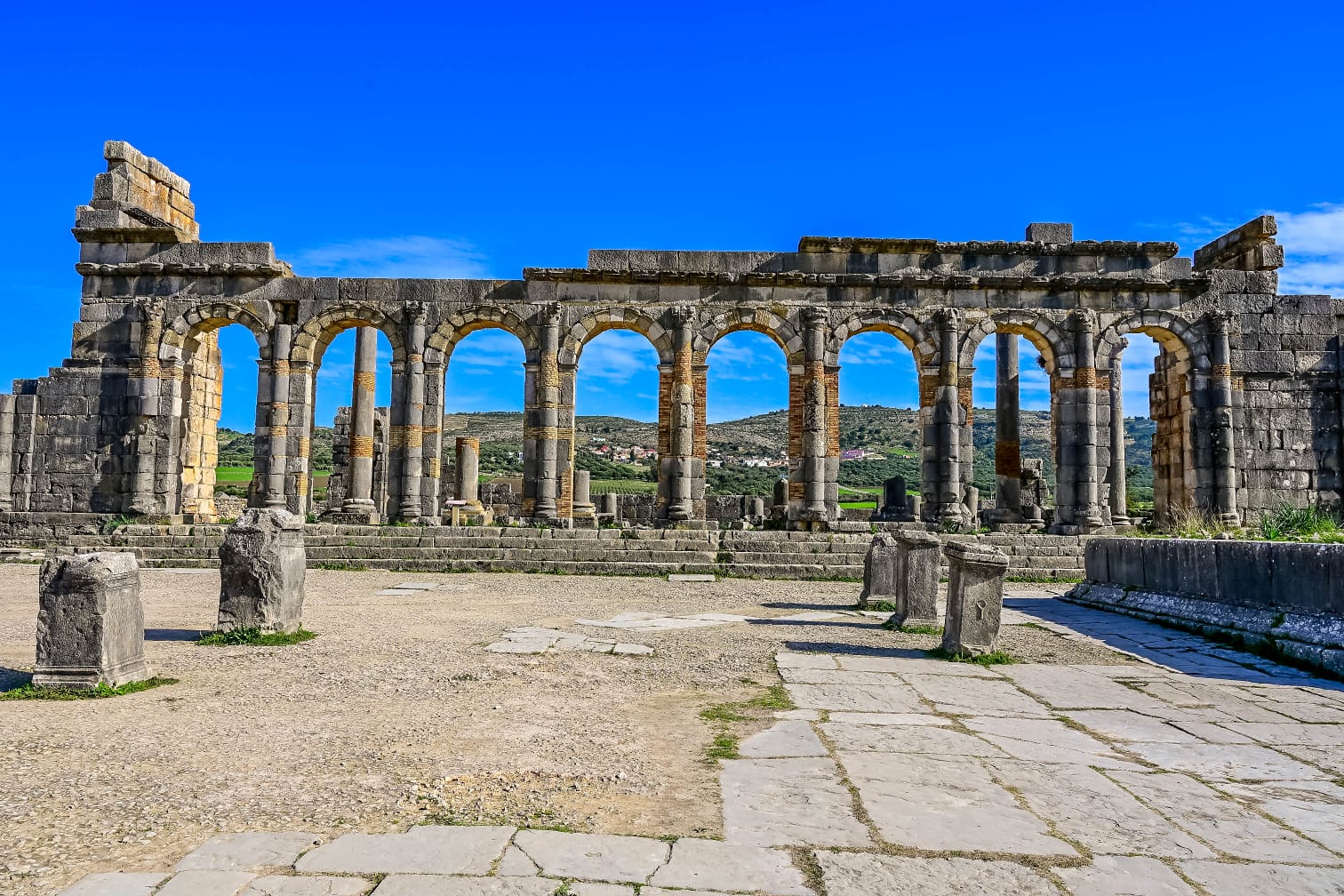Before travel…
If you’re planning on visiting Morocco this secction is for you…
Location
Morocco is situated in north-west of Africa, and its name in Arabic (“al-Maghreb”) literally means “the West”. The country is just 13km from Spain separated by the Street of Gibraltar. Its neighbor on the east is Algeria, in the south its disputed region of Western Sahara borders on Mauritania.

Currency
Dirham(MAD) is Moroccan currency and most people do not accept other currencies. The dirham is a closed currency, which means it can only be bought once you arrive in Morocco. You’re allowed to bring in or take out 1000Dh (around $102) but you’ll need to exchange the rest on arrival. You can exchange your dollars to dirhams at a Bureau de Change in the airport or port, at a bank and in most hotels.
You must exchange currencies only in official exchange houses, identified by a golden badge. No commissions are charged and you must kept the receipt until the return if you want to change the remaining dirham to the currency of your country of origin.
Payment in cash with dollars and euros is accepted in most hotels and restaurants in big cities, you just have to be careful with the exchange rate at which they buy it since it is usually lower.
ATMs are easily found in airports, cities and big towns but are less common in rural and remote areas.
Credit Cards Visa and Mastercard are accepted.


Weather
Morocco’s climate is very diverse, varying with the season and region. In general the country has a tropical climate, with the temperatures reaching as high as 35ºC (95ºF) and as low as 5ºC (41ºF) in the Sahara. The coast has a warm, Mediterranean climate tempered on the eastern coast by southwest trade wins whilst inland areas have a hotter, drier, continental climate. In the south of the country, the weather is very hot and dry throughout most of the year, though temperatures can drop dramatically at night, especially in the months of December and January.

Temperatures in the Atlas Mountains can drop below zero Celsius (32ºF) in winter and mountain peaks are snow capped most of the year. Rain falls from November to March in coastal areas, and the country is mostly dry with high temperatures in summer and a cooler climate in the mountains. Marrakech and Agadir enjoy an average temperature of 21ºC (70ºF) during the winter
The best time to visit…
Owing to the relatively high winter temperatures, and summers that are dry rather than unbearably humid, Morocco is an all-year round destination.
- If you really want to avoid the heat, the best time to visit is during the shoulder seasons of April to May (or maybe even early June), and September to November.
- If you enjoy surf or trekking, the best time to visit Morocco is during the summer, waters like those of Essaouira are ideal for surfing. Trekking fans usually take advantage of this station to walk through the north of the country or the Atlas Mountains.
- If you want to enjoy the ski season, the best time to visit Morocco is winter, which usually takes place between December and March. You can take advantage of the colder climate to move around the south of the country and the desert regions.

Electricity
220 volts in new buildings, 110 in older ones, sometimes both – make enquiries. Power points are of the French type. The frequency used is 50 Hz.
Photos
General photos including landscapes, building, sea, nature are allowed, however, taking photos to other people you will always need to ask permission in advance however, some people might ask for money in exchange for the photo (10 MAD is appropriate). Never take photos of people praying.
Nobody is allowed to take the police, army, navy or soldiers pictures.

Tips
Tipping is entirely discretionary, but it is very welcomed and appreciated way for our guides, drivers, restaurants, hotel porters and camel guides, to support their incomes. We generally leave it up to you and your satisfaction with our services.
Languagges
The official languages in Morocco are Classic Arabic and Tamazight (Berber), though almost 70% of the population is Amazigh, mostly in rural areas, Sahara and the mountains.
However French is taught in the schools and is often used in commerce and business. Around Tangier, there will be many people who can speak Spanish, due to the proximity of Spain and Spain’s past colonization in the north.


Religion
Morocco is an Islamic country (approximately 99% of the country is Muslim) 1 % among Jewish, Christian. Muslims are expected to practice the worshiping as follow: pray five times per day, fast Ramadan, charity and pilgrimage.
Dress Code
There’s no official dress code in Morocco, however wearing clothes that cover the shoulders, upper arms and knees will be highly appreciated by the local population, particularly in rural areas.
Health Considerations
- There are no compulsory vaccines to travel to Morocco.
- One of the biggest risks is water, so try to drink only bottled or boiled water.
- Protect your self from the sun with sunscreen with a high protection factor and drink liquids frequently, especially on the hottest days.

Telephone and Internet
Check with your telephone company whether or not you have any voice and data roaming rates activated in Morocco, to avoid surprises on your bill when you return from your vacation. Remember to disconnect data roaming so that your mobile does not automatically connect to the Internet.
The companies Maroc Télécom, Orange and Inwi operate in Morocco. Coverage is quite good, except in remote rural or desert areas.
Free Wi-Fi network is available in hotels and some restaurants. For foreigners, “PocketWiFi” is available from approximately 10 euros per day, it captures all 3G / 4G signals in wifi signal and allows you to connect several devices simultaneously.

Souvenirs & Handicrafts
Each city is specialized in typical crafts:
- Rabat: embroidery
- Casablanca: leather goods
- Meknes: Metal work
- Fes: blue pottery and leather.
- Marrakech: leather and spices
- Essaouira: Argan oil and wooden work





Gastronomy
Moroccan food is known by its variation but tagine is the most famous dish. Tagine is a mixture of vegetables and meat cooked with spices in a typical ceramic pot. Couscous is the second famous dish which is totally different than tagine; An authentic recipe for Moroccan Couscous with Seven Vegetables, lamb, beef, or chicken is stewed with assorted veggies, then served atop a mound of light, fluffy steamed couscous. A rich broth seasoned with ginger, pepper and turmeric is poured over all or offered on the side.
Moroccan food has got also pure tomato and spices to eat with bread as appetizers. Salads, grilled vegetables, rice, and soups. Classic soup “Harira” is worthy to try. Trust your nose and follow the smell of lentils, tomato, chickpeas, coriander and spices. The Harira is mostly served in a pot with wooden spoons to use, another Moroccan charm.


















